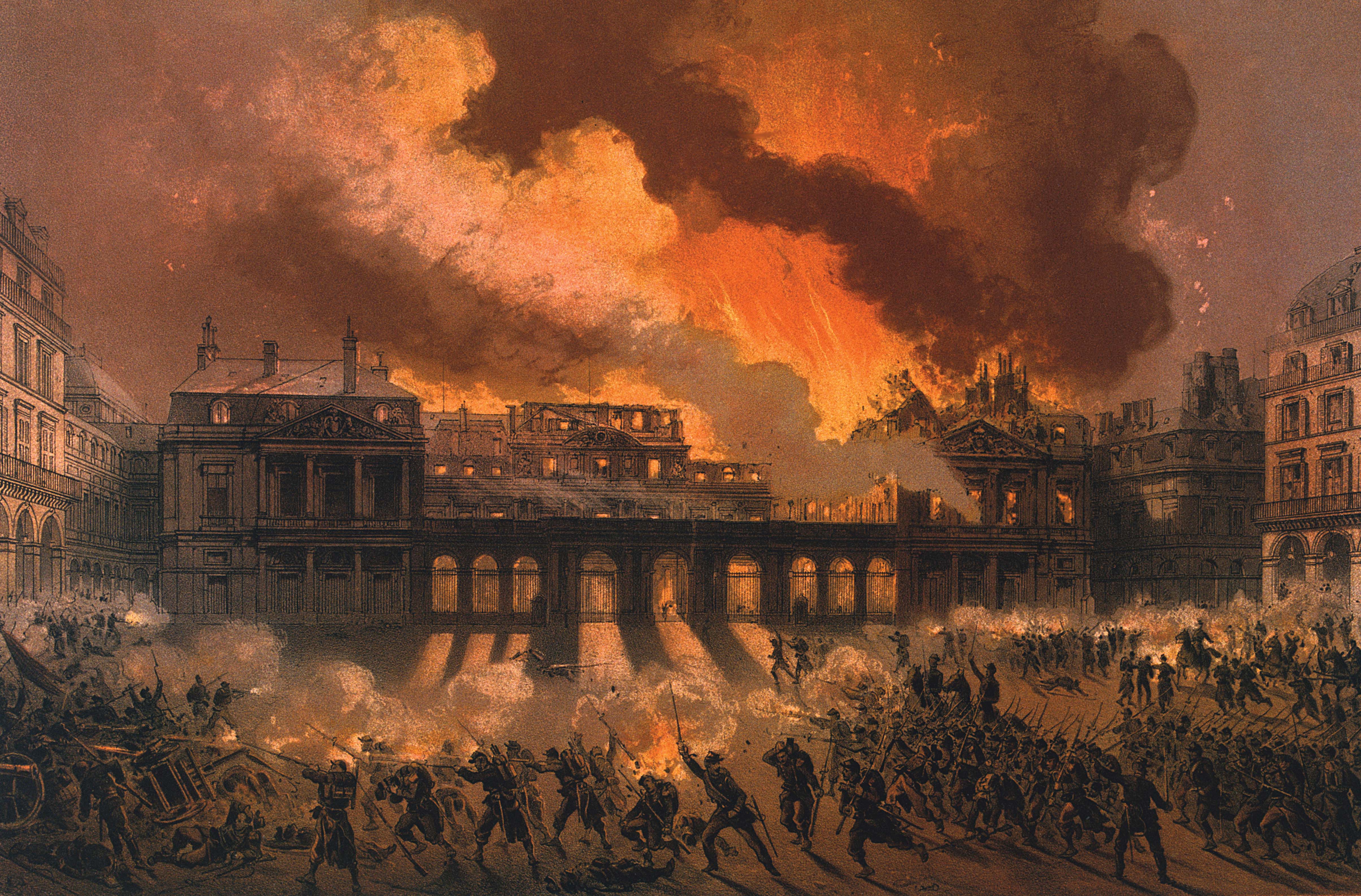The 1870–71 war between France and Germany was the first, but remains the least remembered, of the archrivals’ terrible modern wars. Even less attention has been paid to the Americans it drew across the Atlantic to fight, observe, mediate, run a field hospital and, before it was over, endure two grinding sieges and pounding bombardment in Paris. Not every American in the French capital stuck it out, but Elihu B. Washburne, minister of the American Legation, considered it his duty to look out for those of his countrymen and women trapped in “that circle of iron and fire.”
The Franco-Prussian War, as it was known, was prompted by the combatant nations’ deeper territorial and political ambitions. Prussian Chancellor Otto von Bismarck needed a war to unite the German confederation of states into a nation; Napoléon III, leader of France’s shaky Second Empire, gave him one by mobilizing his country’s army on July 15, 1870, as a show of force intended to discourage any further consolidation of German power. It had the opposite effect. The North German Confederation mobilized its forces in response, and Bismarck was able to convince the independent southern German states to enter a mutually supportive military alliance. The French declared war on July 19 and on August 2 marched into German territory. Despite Napoléon III’s hopes for a quick victory, the stage was set for a disaster that would shake France to its foundations.
Just as French and German military officers had crossed the Atlantic to observe the latest tactics and technological advancements in action during the American Civil War, the new conflict in Europe prompted U.S. military officers to attach themselves to the warring armies as observers.
From the Prussian side Lt. Gen. Philip Sheridan, an advocate of total war, advised Bismarck to cause the French “so much suffering that they must long for peace and force their government to demand it. The people must be left with nothing but their eyes to weep with over the war.” By the time general turned businessman Ambrose Burnside arrived in Paris on October 2, the capital had been surrounded by Prussian troops and was under siege. Acting as a mediator for Bismarck, Burnside carried messages between the French and German commands.
The bulk of the French imperial army capitulated at Sedan on September 2, and the empire fell with it. Taken captive, Napoléon III and his aides would sit out the war in a luxurious Prussian castle. Two days later in Paris a conservative Government of National Defense claimed power, vowing not to surrender, organizing the city’s defense and arranging elections for a representative assembly. The republicans were back—but could they find a way out of the war?
Elihu Washburne, a 53-year-old lawyer and former Republican congressman from Illinois, had become minister to France in 1869. He and his family lived in Paris off the Champs-Elysées at 75 avenue de l’Impératrice (present-day avenue Foch). He walked daily to the Legation offices a mile and a half away. Washburne had oversight of some 5,500 Americans in the city when the war broke out, though as the siege tightened, all but a couple of hundred fled. He was also tasked with sheltering the non-Prussian German citizens in Paris, who numbered some 30,000. The French agreed that such Germans, aside from men of military age, could leave the city under U.S. travel documents. Those seeking to exit flooded the Legation.
“Pinched with hunger, terrified by threats of violence, with no means of leaving the country, they have come to me to save them,” Washburne wrote in his memoirs. “Women with little babes in their arms, and women far gone in pregnancy, bathed in tears and filled with anguish, have come to our Legation as their last hope.”
The Germans helped pay the refugees’ travel expenses, and by mid-September Washburne thought he had gotten nearly all of them out of Paris. Over the coming months he would come to learn just how many had remained.
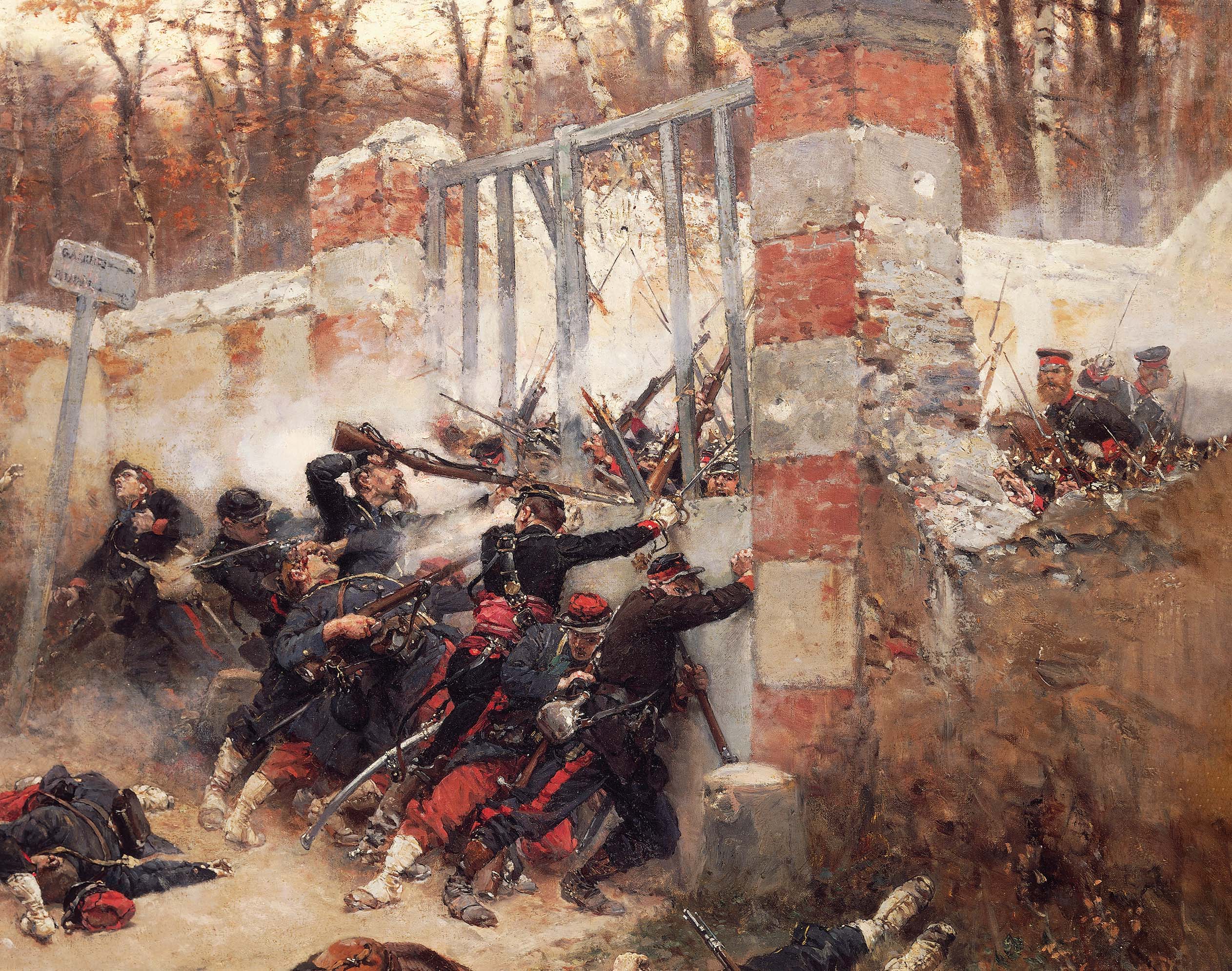
When the war began, Dr. Thomas W. Evans, a dentist who had practiced in Paris since 1847, organized the American International Sanitary Committee and solicited donations from Americans in Paris and abroad to set up a field hospital, or ambulance, as it was called at the time. Among Evans’ recruits was Dr. John Swinburne, an American who happened to be traveling in Europe at the time. Swinburne had been a Union Army surgeon during the Civil War and had developed an innovative system of heated and ventilated tents that greatly improved sanitary conditions for the wounded.
Evans promptly ordered 10 U.S. Army tents from the States and donated his personal collection of Civil War medical equipment—six ambulance wagons, surgical instruments and other medical supplies he’d brought over for an exhibit at the 1867 Exposition universelle. His coffee wagon had last seen service at the April 1865 Confederate surrender in Appomattox Court House, Va.
By October the American Ambulance—operating opposite the Evans’ residence on land donated by the Prince de Bauffremont—was treating up to 100 patients at a time. A dozen young men, including Washburne’s son Gratiot, drove the horse-drawn ambulance-wagons, picking up wounded around the city and its outskirts. Several dozen women served in the ambulance’s Auxiliary Service, assisting a corps of trained nurses by making bandages, serving food and washing linens. The auxiliary had a tent equipped with a piano, and as the siege wore on, it became a favorite hangout. “[It] naturally became an important social center, not only for the Americans cooped up within ‘the circle of iron and fire,’ but [also] for many foreign residents, who constantly dropped in to relieve the tedium of the time,” Evans later wrote.
Mary Putnam, the 28-year-old daughter of American publisher George Putnam, was in Paris studying to be a doctor as the first woman admitted into the School of Medicine at the vaunted Sorbonne. In letters home she mentioned having applied to work at the ambulance only to be told they had far more volunteers than they could use. “The most interesting American peculiarity here at present is their success with the ambulances,” she wrote to her father. “It is wonderful. They hardly lose a case, while in the French hospitals almost everyone dies.” In a time before antiseptic and antibiotics the ambulance was proud to report a mortality rate of 19 percent, compared with a French field clinic’s loss rate of 45 percent.
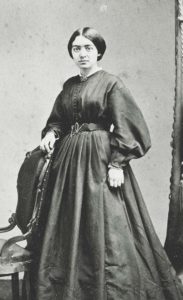
On the evening of September 4—as news spread of the fallen empire, and a mob of armed protesters swept across the Place de la Concorde—Evans returned home to find guests who needed his help. Spouting references to the “First Revolution,” the radicals were determined to exploit the current crisis. In their sights stood the Tuileries Palace, seat of the empire and on that tumultuous afternoon still home to Empress Eugénie. The Austrian and Italian ambassadors went to her rescue, sneaking the empress and a companion out of the palace and into a horse-drawn cab.
Eugénie de Montijo, daughter of a Spanish noble and granddaughter of a Scottish-American wine merchant, found one Bonaparte supporter’s door closed and had another slammed in her face. She then drove to Evans’ home.
Originally from Philadelphia, Evans had introduced modern dentistry to Europe and won the respect and confidence of several royal houses, including that of Napoléon III. The dentist’s renowned discretion led to his selection as an unofficial go-between on more than one occasion, and Eugénie had been his patient before becoming empress. The ladies spent the night at Evans’ home, and in the morning he provided for their use a British visa he happened to have for another doctor and patient. Then Evans and a friend set out in a carriage with the empress and her companion. Guards watching the city gates waved them through, and they continued west along the Seine into Normandy, reaching the coast at Deauville the next day. An Englishman’s yacht whisked the doctor and his wards across the channel to Britain, where Eugénie rejoined her son, Louis, and found safe harbor.
Evans did not return to wartime Paris, fearing he would be stuck there. Instead, he made a medical inspection tour of eastern France and southwestern Germany, where the Prussians were holding nearly 400,000 French POWs, and spent the balance of the war raising funds for clothing and supplies for the prisoners.
The gates of Paris closed to travel on September 18, shutting out some 240,000 German troops, and trapping within more than 500,000 French soldiers, mostly national guardsmen. The French made occasional sorties, hoping to break the encirclement, but were repeatedly routed. The only way to communicate with or travel to or from the French capital was via gas balloon, departures that soon switched to nighttime schedules to avoid being shot down by the Prussians. The French completed nearly 70 such flights during the siege, one balloon landing as far away as Norway. Flown out of the city on October 7, Minister of War Léon Gambetta set up camp in the Loire Valley to continue fighting the Prussians.
By that time, Washburne noted, no more than 250 Americans remained in the capital. Several had been arrested as German spies when heard speaking English. The minister got them out of jail and railed against the insidious paranoia emerging everywhere.
Throughout the autumn of 1870 Washburne kept up a steady correspondence with Bismarck, who was grateful for his continued help safeguarding German citizens in Paris. Nearly six weeks into the siege Bismarck agreed to let a party of 48 Americans and 21 Russians leave under U.S. travel documents. Forming a convoy of 26 carriages, they exited the city on October 27. Four days later armed radicals staged a mass protest outside the City Hall against the Government of National Defense, but guardsmen dispersed the throng. Authorities held a plebiscite the following week, and Parisians expressed their support of the government by a margin of 557,996 to 62,638.
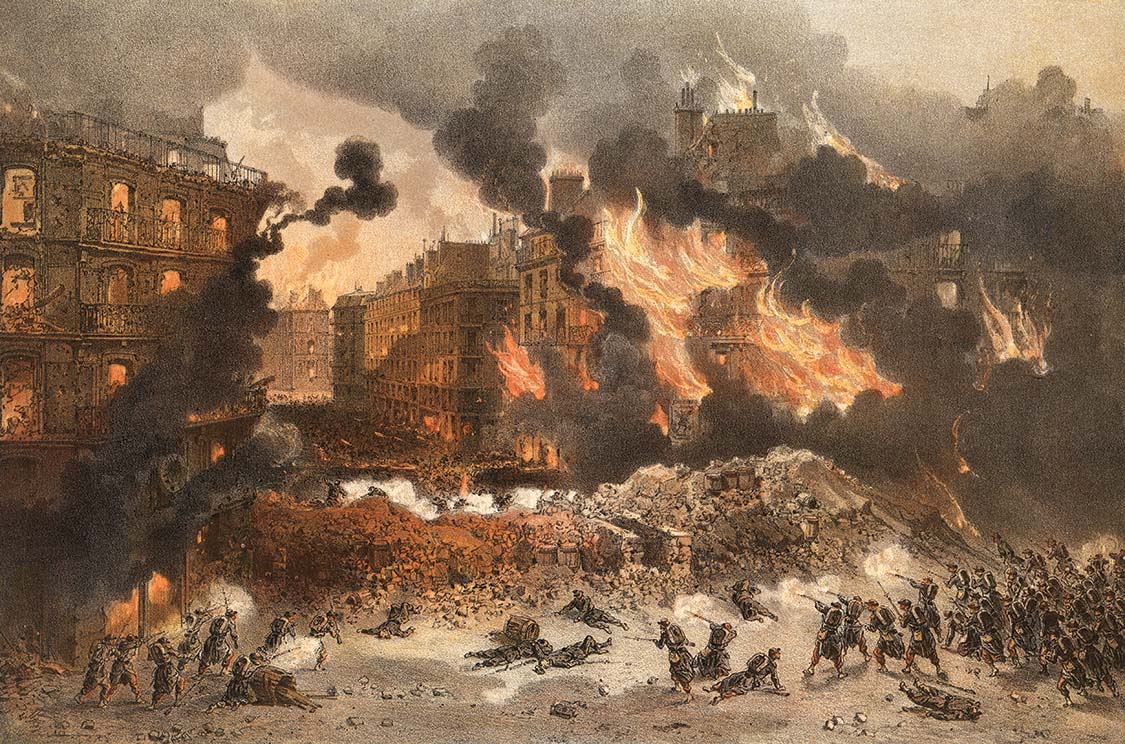
By mid-November food was becoming as scarce as information. Washburne was able to receive newspapers from New York and London in his diplomatic bag, but no one else had any news. “One of the features of the siege is the thousand rumors and reports that are constantly flying about,” he wrote in his journal. “The most absurd and ridiculous canards are circulated every hour in the day. These French people are in a position to believe anything, even that the moon is made of green cheese.”
So many horses had been killed for meat that transportation was hard to find. Mules, dogs, cats and rats were also on the menu. In his journal Washburne noted their rising prices as commodities. On Thanksgiving Day he and a dozen Americans, including Dr. Swinburne and Dr. William E. Johnston, a longtime Paris practitioner who also worked at the ambulance, attended a service at the American Episcopal Church of the Holy Trinity and then shared a paltry turkey dinner in a restaurant.
Colonel Wickham Hoffman, the U.S. Legation’s first secretary, noted that the government could no longer feed the animals in the city zoo, so it had them sold for slaughter. “I indulged from time to time in small portions of elephant, yak, camel, reindeer, porcupine, etc., at an average rate of $4 a pound,” Hoffman wrote in a memoir. “Of all these reindeer is the best; it has a fine flavor of venison. Elephant is tolerably good.”
As the weather turned colder, Parisians began felling mature trees for fuel. The Bois de Boulogne and the city’s leafy avenues soon became bare and devoid of traffic. By mid-January 1871 Washburne was giving financial support to 2,385 Germans (through funding supplied by Bismarck), and the Paris press was accusing him of being a Prussian sympathizer. The new year also brought a Prussian bombardment of the city. One young American had his foot shattered when a shell passed through his room. Surgeons at the American Ambulance were compelled to amputate the man’s leg, and he later died. According to Washburne, he was the only American killed in the war.
National guardsmen made a final attempt to break the German siege on January 19. A failure, it resulted in high French casualties. Three days later leftist partisans staged another demonstration outside City Hall, demanding an end to bread rationing. When someone in the crowd shot an officer of the guard, his men returned fire, killing five and wounding 18. The city thrummed with tension. A week later the Government of National Defense announced it would begin peace negotiations, and on January 28 France and Prussia signed an armistice. After 132 days of siege the war was over. Or was it?
“I hear tonight that the people broke into the great central market today and seized everything they could lay their hands on,” Washburne wrote on January 29, the day the armistice went into effect. “The market men were demanding the most extortionate prices for everything that was eatable and refused to make the least concession to the poor, starving people.”
With an end to the fighting Britain and the United States sent aid, but France was in such disarray that distribution proved near impossible. At least two American ships carrying food and supplies landed at Le Havre but were unable to unload. “The French are so government-ridden that they are unable to take the initiative in anything for themselves,” Hoffman wrote.
While the city returned to normal on some levels, the radical faction of revolutionary socialists—calling itself the Commune—continued to push its demands and found an unlikely ally in the national guardsmen, who had been deprived of food, shelter and rent relief while on duty. On March 18, when ordered to fire on an armed barricade at Montmartre, guardsmen refused and reversed their muskets in solidarity. The guard had switched loyalties to the Commune, and over the next 24 hours the Government of National Defense fled to Versailles.
“When the government left Paris,” Washburne recalled, “the insurgents were far more astonished at their victory than the loyal people were.”
The radical Central Committee of the National Guard claimed power, vowing to protect the people against “danger,” meaning anyone who did not support their program. Executions began almost immediately, and the movement slid into violence, theft and anarchy before more responsible members could stop it. “They had used these poor enthusiasts while it suited their purpose,” Hoffman wrote. “Now they threw them overboard.”
Radical clubs, styled and named after the Jacobins of the 1789 French Revolution, proposed hanging Washburne and banishing any remaining Americans, but no action was taken. The red flag replaced the Tricolore over City Hall, yet Versailles continued to hold its 170,000 loyal troops at bay.
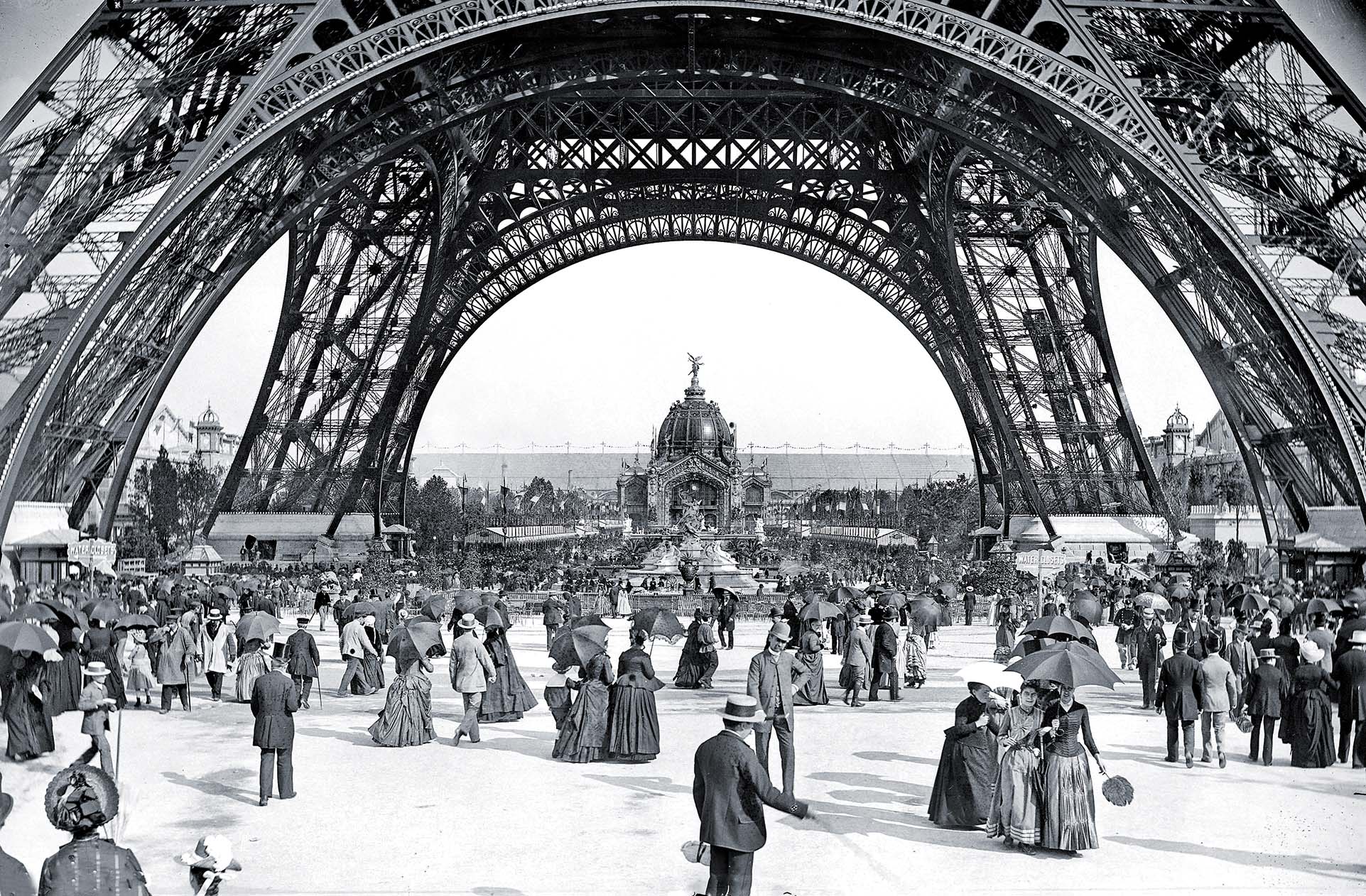
Washburne was busy through April keeping Americans from jail and execution, as well as seeking the release of Paris Archbishop Georges Darboy, whom the anti-religious radicals had arrested along with dozens of priests, nuns and other clergy members. An estimated 300,000 Parisians had fled by the time the Commune announced that no French men between the ages of 19 and 40 could leave the city, as they were to be conscripted into the guard. Taking a risk, Washburne asked Commune officials if people from Alsace and Lorraine—which had been promised to the German empire in the recent peace agreement—could leave Paris as German citizens, traveling on U.S. documents. Foreign relations minister Pascal Grousset agreed. Washburne had to hire 10 clerks to handle the hundreds of applicants who lined up outside the Legation each morning. (In a matter of weeks he spirited 4,450 of them to safety.)
By mid-April government soldiers began shelling the insurgents from batteries west of the city, some shells striking the Arc de Triomphe and Champs-Elysées.
The danger compelled Washburne and family to move to safer quarters near the city center. Pillaging and looting were widespread by then, and it wasn’t long before a band of “organized brigands,” as Washburne dubbed them, showed up threatening to confiscate his home and possessions. The American diplomat appealed for help from Grousset, who dispatched men to fend off the looters.
On May 21 government troops found an undefended entry into Paris, and so began what has been called the “Bloody Week.” Amid the street fighting soldiers summarily shot thousands of insurgents, while the radicals executed hundreds of hostages, including Archbishop Darboy. As the Commune collapsed, its members firebombed buildings throughout the capital. Tuileries Palace, City Hall, the Finance Ministry, the Palace of Justice and other institutions were reduced to smoldering ruins. “Beautiful France has been sorely tried with revolutions,” Hoffman wrote. “Let us hope that she has seen the last.”
With the Commune defeated, Parisians cleaned up the mess, sent the insurgents to face justice, set up a new republican government and returned to work. Marked by class war within territorial war and siege within siege, the short-lived Franco-Prussian War is among the more complex in modern history.
Still, the war and the chaos it engendered did not sour Americans on the joys of Paris. The French capital soon regained its status as what Evans called the “Heaven of Americans,” and by the mid-1920s the U.S. expat community had grown to some 30,000 full-time residents. Alas, within two decades the arrival of another German army once again led to very dark times in the City of Light.
Paris-based journalist and author Ellen Hampton is a frequent contributor to Military History. For further reading she recommends From Appomattox to Montmartre: Americans and the Paris Commune, by Philip M. Katz; Elihu Washburne: The Diary and Letters of America’s Minister to France During the Siege and Commune of Paris, edited by Michael Hill; and The Dentist and the Empress: The Adventures of Dr. Tom Evans in Gaslit Paris, by Gerald Carson.
This article appeared in the July 2021 issue of Military History magazine. For more stories, subscribe here and visit us on Facebook:

